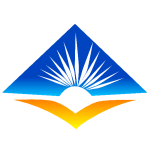The government has started to supply junior secondary school (JSS) Grade 9 books to public schools countrywide.
The schools Heads of Institutions (HOI’s) are receiving the Grade 9 consignments at the sub county Ministry of Education offices.
The first cohorts of the Competency Based Curriculum (CBC) will be in Grade 9 starting January 2025 which is the final grade in JSS before proceeding to senior schools.
The learners will sit for their final assessment (KJSEA – Kenya Junior School Education Assessment) in jSS before being placed in different pathways in senior schools.
The supplied books which include both teachers copies and learners books cover these subjects;
1) Mathematics
2) English
3) Kiswahili
4) Social Studies
5) Creative Arts
6) CRE and IRE
7) Science and Technology
8) Agriculture and Nutrition
Parents will however have to buy the English setbooks and Kiswahili fasihi books for their children which are missing in the delivered package.
The JSS English setbooks are Daughter of Nature and Bridges Without Rivers. For Kiswahili they include Wema Hauozi and Mshale Wa Matumaini.
The Kenya Publishers Association (KPA) had in September said that primary and junior secondary school will have new books starting October after the learning areas were rationalized.
KPA chairman Kamau Kiarie said the main supply of textbooks for Grade 9 (Junior Secondary) will be between October and December 2024.
“These were already evaluated by the Kenya Institute of Curriculum Development (KICD) and results were released to the publishers. As soon as the process of signing contracts is finalised, publishers will embark on printing and distribution of the same, ahead of First Term in January 2025,” said Mr Kiarie in September.
CBC was rolled out in 2019 and has faced various challenges, ranging from distribution of textbooks to schools to complaints about the quality of the learning materials.
Mr Kiarie said the new books were developed following the guidelines drawn by Presidential Working Party on Education Reforms (PWPER).
PWPER recommended the rationalisation of the number of learning areas to reduce overload, overlaps and gaps.
“This process of rationalisation involved a reduction of learning areas and content, through the integration of existing learning areas,” said Mr Kiarie, adding that the process was undertaken by KICD.
In Lower Primary, the learning areas have been reduced from 8 to 7; in Upper Primary, they have been reduced from 11 to 8; while in Junior Secondary the subjects were reduced from 14 to 9.
“As such, publishers developed books on the rationalised curriculum designs,” Mr Kiarie said.
Unlike primary school, where pupils learn by subject, junior school has learning areas, nine in all, with a total of 40 lessons per week.
These are English, Kiswahili, Mathematics and Social Studies as well as Agriculture, Life Skills Education, Business Studies, Sports and Physical Education as core subjects.
Religious Education is also a core subject, with learners studying either Christian Religious Education, Islamic Religious Education or Hindu Religious Education.
Learners are also taught integrated science, health education and pre-technical and pre-vocational education as core subjects.
Elective subjects are Visual Arts, Performing Arts, Home Science, Computer Science, Foreign Language (German, French, Arabic, Chinese or Mandarin), Local Language and Kenyan Sign Language.
Pre-technical subjects prepare students for the labour market by providing the technical skills and knowledge required to perform specific tasks.
In July, the piloting of the Grade 9 final assessment known as the Kenya Junior School Education Assessment (KJSEA) was conducted in 235 schools across all 47 counties.
The Kenya National Examinations Council (KNEC) used the Grade 8 learners for the piloting of the transition assessment.
